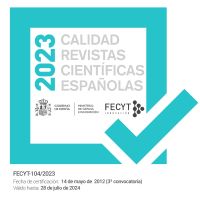Striving Aggressive tendencies among undergraduates: the role of personal and family characteristics
DOI:
https://doi.org/10.5944/reop.vol.22.num.1.2011.73Keywords:
aggression, self-esteem, self-efficacy, family-communication-style, parentalneglectAbstract
This study examined the role of Personal (Self-esteem, self-efficacy, Locus of Control & Gender) and family characteristics (Family communication style, and Parental neglect) on aggressive tendencies among undergraduates students in South-South Geo-Political Zone in Nigeria. A total of 2,862 undergraduates, made up of 1302, females and 1,560 males drawn from seven universities participated in the study. A questionnaire was used in collecting data. The questionnaire consisted of seven sections: The demographic variables, Family communication style, Parental neglect, Self-esteem, Self-efficacy, Locus of control, Gender and Aggressive tendencies. Results of the multiple regression analysis revealed that self-efficacy, self-esteem, and family communication style independently predict aggressive tendencies, while locus of control and parental neglect was not found to independently predict aggressive tendencies. Personal and family characteristics jointly predict aggressive tendencies. Results of the 2x2x2 analysis of variance to check the interaction effect of gender, locus of control, and parental neglect, indicated that there was an interaction effect of gender and locus of control, while there was no statistical significant interaction of gender, locus of control and parental neglect. Based on the findings of this study, it was recommended that the future of a successful intervention by therapist/ service providers for students with aggressive behavior, lies heavily on knowing and identifiying the personal and family characteristics of the individual. This no doubt would help the therapists tailor specific treatment for specifics individuals.
Downloads
Downloads
How to Cite
Issue
Section
License
Las obras que se publican en la revista REOP están sujetas a los siguientes términos:
1. Los autores conservan los derechos patrimoniales (copyright) de las obras publicadas, y garantizan a la revista el derecho de ser la primera publicación del trabajo al igual que permiten la reutilización de las mismas bajo la licencia de uso indicada en el punto 2.
2. Las obras se publican en la edición electrónica de la revista bajo una licencia Creative Commons Reconocimiento-NoComercial 4.0 Internacional . Se pueden copiar, usar, difundir, transmitir y exponer públicamente, siempre que: I) se cite la autoría y la fuente original de su publicación (revista, editorial y URL de la obra); II) no se usen para fines comerciales; III) se mencione la existencia y especificaciones de esta licencia de uso.
3. Condiciones de auto-archivo. Se permite y se anima a los autores a difundir electrónicamente la publicación de sus obras, ya que favorece su circulación y difusión y con ello un posible aumento en su citación y alcance entre la comunidad académica.






